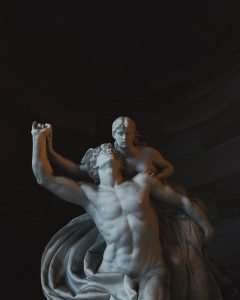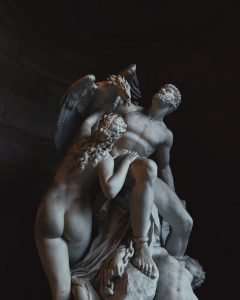Modern art is what we call it when someone decides to be creative and make something out of nothing. It’s an artistically creative expression that isn’t focused on creating something as much as it is on the artist expressing their own creativity. Traditional art, on the other hand, is all about creating something out of nothing. It’s about focusing on the art itself, and not so much on the artist.
Tthere are many ways to tell the difference between traditional art and modern art, but probably the most obvious one is that traditional art is functional, while modern art isn’t. Traditional art demands a purpose; it has to serve a need or purpose of some kind or there would be no reason for it to exist. Modern art doesn’t have to serve a purpose; it can just exist as an artistic expression.
Modern artists have also become known for breaking the rules of traditional art, while traditional artists try to remain true to those rules. In many cases, this means that there are no defined rules to break in modern art – the only rule being that there are no rules at all!
Now let’s look at the differences between traditional and modern art.
Traditional art tends to be more realistic, and modern art is more abstract. Traditional art tends to use more subdued colors, while modern art uses brighter and bolder colors. Traditional paintings focus on content, while modern paintings focus on form and technique. Traditional artists tend to paint in oils, while modern artists tend to paint with other mediums such as acrylics or watercolors.
Traditional artists often work for others, creating portraits or landscapes that another person has commissioned them to do. Modern artists tend to create their own pieces and sell them at galleries or through other avenues of exhibition. Most traditional artists are trained in their medium (although they may also go on to develop their own style), while modern artists often become self-taught or learn informally from another artist.
Traditional art traditionally is a style of painting, sculpture and printmaking that are created in the Western tradition. Traditional art commonly uses representational imagery and techniques to convey meaning.
Traditional art is also contrasted by modern art, which generally does not seek to imitate reality. Instead, modern artists have adopted new ways of creating a work of art, resulting in a more abstract style.
Types of traditional art include painting, sculpture, printmaking and drawing. There are also many types of traditional art forms.
Painting is one type of traditional art that is done with the use of pigments and color on canvas or paper. The artist creates an image by applying paints and dyes directly to the surface of the canvas or paper, as well as using other media such as oil pastels or crayons. One common type of painting is oil painting, which has been used since the Renaissance era. It involves putting pigment onto a solid surface such as wood panels or canvas sheets and covers a wide range of styles and techniques.
Sculpture is another traditional form that uses three-dimensional mediums such as clay or bronze to create an image. Sculptures are often meant to be displayed indoors or outdoors for viewing by people who are nearby. Modern sculptors
Traditional art can be defined as the kind of art that has been continuously created and collected by humans. It is a term that describes most works of art that have been created throughout history, including paintings, sculptures, and mosaics.
The creation of traditional art is often motivated by a sensibility that appreciates the time-honored qualities associated with certain styles; for example, certain paintings may be appreciated because they are reminiscent of earlier periods, or have similar styles to those that were popular in the past. Certain pieces may also be appreciated because they remain true to a particular school of thought or method of representation. Alternatively, some works may be appreciated because their artistic style reflects the values and traditions of their particular culture.
Traditional art often features symbolic elements that are related to one another in a meaningful way. This may include an emphasis on symbolism derived from a sacred text or historical events. The symbolism associated with each work serves as a reminder of its cultural significance, while also serving an aesthetic purpose in the arrangement of its design. Traditional art often appeals to viewers who seek out pieces that are emblematic of a nation’s heritage or identity.*
Just as there are traditional artworks, there are also traditional artists and artworks. Both take a long time to develop and refine.
Traditional art and artists have developed over centuries. Traditional art is often admired for its craftsmanship, skill, and traditions that have been passed down through the generations. Traditional artists are usually known for their classic techniques and approaches to their work that involve a long preparation period, such as the apprenticeship system used by many artists in the past. For example, Michelangelo was trained as an apprentice in a Florentine workshop before he became famous for his works, such as “David” or “The Last Judgement”.
Many famous paintings throughout history were created by various masters with different styles of painting. The Mona Lisa, one of the most famous masterpieces in the world and painted by Leonardo Da Vinci, took years to complete after he started it.
Traditional artists are typically known for their unique style of work, which they’ve developed over years of practice and experimentation. Many traditional artists create unique works that are one-of-a-kind pieces that require more than one artist to create and may not be duplicated again.
Modern art is quite different from traditional artworks because it involves new ideas and concepts that often challenge
Traditional art is art that has been done in the same way for a long time and is considered by most to be good.
Traditional art, like painting and sculpting, for example, has been around for centuries but is still popular today. Traditional art is often created by famous painters, such as Leonardo da Vinci or Monet.
Painting and sculpting aren’t the only types of traditional art. Traditional music, like jazz and classical, is also very popular. Traditional music has a lot of history behind it and lots of different styles that people enjoy listening to.
Traditional art is different from modern art in that it is usually much more detailed than paintings made today. Modern artists create work that represents their own emotions and feelings. Modern artists don’t spend a lot of time on the details because they want to represent the nature of an object or feeling rather than its accuracy.
Modern art uses new techniques while traditional art tends to stick with techniques that have been around for a long time. Many people like to collect work done before 1950 because it can be very valuable now due to its age and popularity at the time it was created.*!—-*
Name:Ancient Greek Philosophy
Take a simple thing like the color blue. Blue has been used in art for a long time. In fact, it was used in the time of Van Gogh and Picasso. It’s just that the way it was used was different.
“Blue” as we think of it today didn’t really exist until the 19th century. Before that, almost every shade of blue was called “green.” The word “blue” is actually derived from an old Indo-European word meaning “dark.” And so even though we think of blue as a stable thing, as a color that’s always been there, that’s not actually true. Blue is one example of a “traditional art” technique—a technique that has been rediscovered or repurposed by modern artists like Picasso but one which is actually relatively new to us.
Uniforms are another good example of this sort of traditional art: they have been around since before there were actual armies, and they have their roots in the clothes people wore on farms and in villages (the British army didn’t adopt its famous khaki uniform until 1845). But today we think of uniforms as being related to war, not work. We don’t look at a painter’s smock or a chef’s hat and



